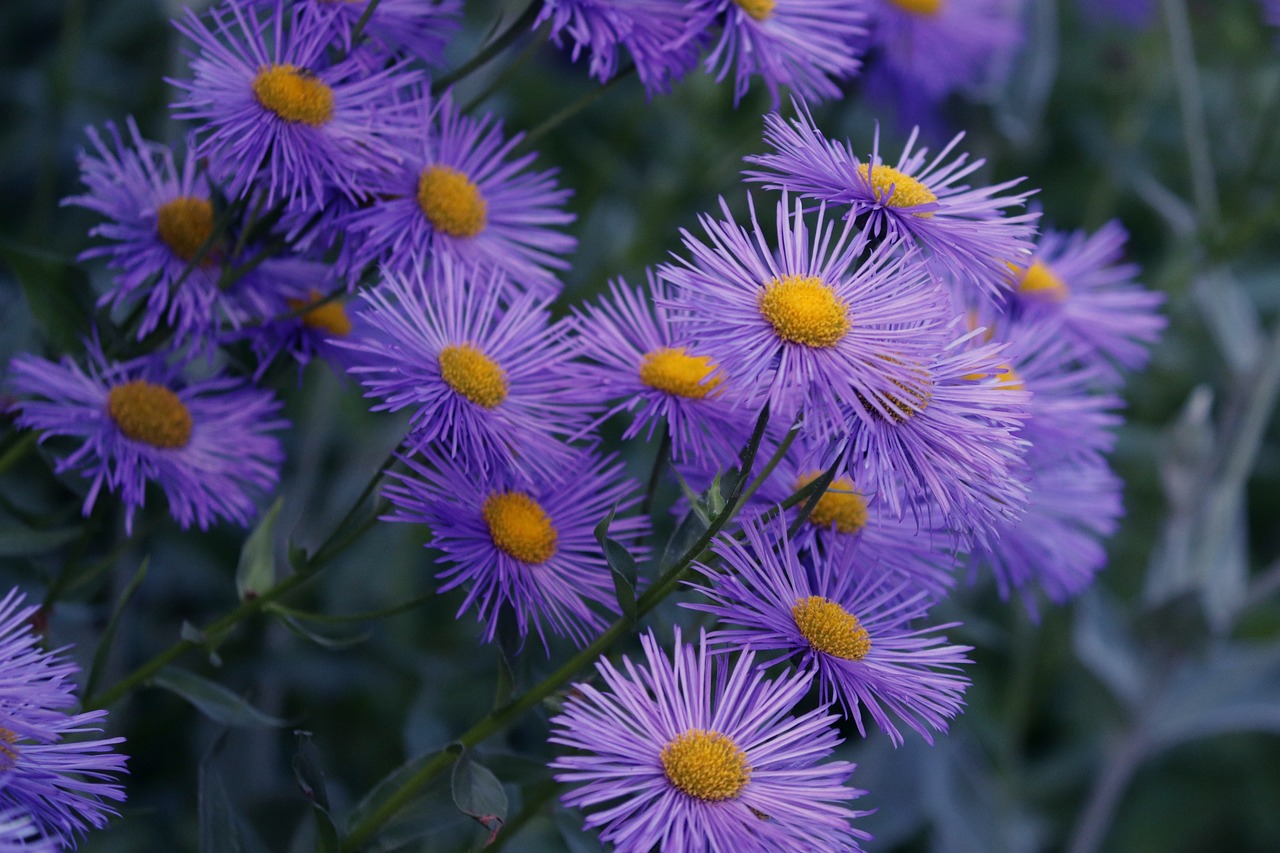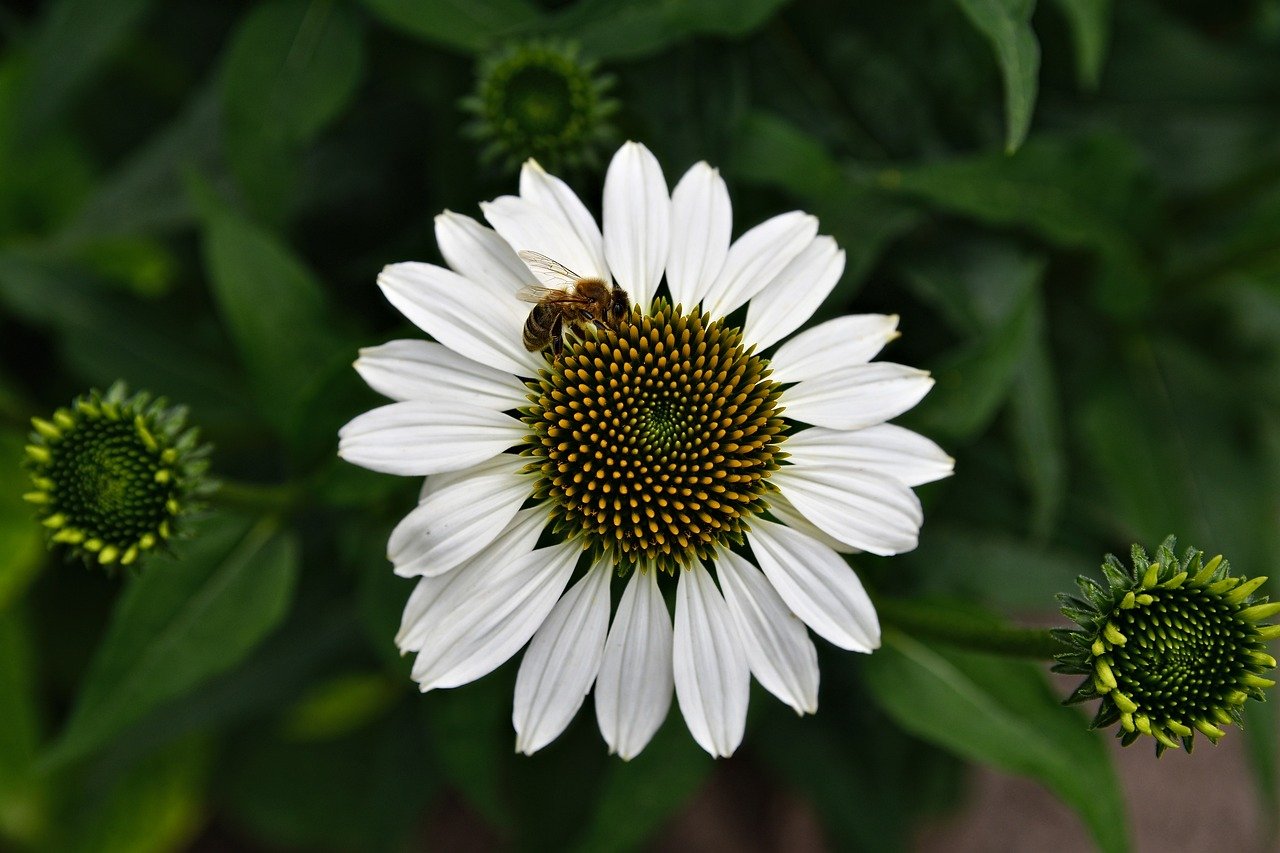Best Plants for a Beautiful Summer Garden
When it comes to creating a beautiful summer garden, the choice of plants plays a crucial role in transforming your outdoor space into a vibrant and inviting sanctuary. From sun-loving flowers to drought-tolerant succulents, fragrant herbs to tropical plants, there is a wide array of options to choose from to enhance the beauty of your garden during the summer months.
Sun-loving flowers such as marigolds, petunias, and zinnias are excellent choices for adding a burst of color and cheer to your garden. These flowers thrive in the bright sunlight of summer, blooming abundantly and creating a lively atmosphere that is sure to brighten up your outdoor space.
For those looking for low-maintenance options, drought-tolerant succulents like agave, sedum, and echeveria are perfect picks. These plants not only survive but thrive in hot and dry conditions, making them ideal for a summer garden that requires minimal watering.
Adding fragrant herbs like lavender, rosemary, and mint to your garden not only fills the air with delightful scents but also attracts beneficial pollinators like bees and butterflies. These herbs not only enhance the sensory experience of your garden but also contribute to its biodiversity.
Transform your garden into a tropical paradise with plants like hibiscus, bird of paradise, and banana plants. These exotic beauties bring a touch of the tropics to your summer landscape, infusing it with lush greenery and vibrant blooms even in temperate climates.
Shade-loving foliage plants such as hostas, ferns, and caladiums are perfect for areas of your garden that receive less sunlight. These plants thrive in the dappled light of summer, adding texture and color to shaded spots and creating a dynamic contrast in your garden.
Enhance the vertical interest of your garden with climbing vines like clematis, jasmine, and morning glories. These plants cover walls, trellises, and arbors with a cascade of blooms, adding a touch of elegance and charm to your outdoor space during the summer months.
For those who enjoy gardening for more than just aesthetics, growing edible plants like tomatoes, peppers, and cucumbers can be a rewarding experience. A summer garden filled with these plants provides a bountiful harvest of fresh produce for you to enjoy throughout the season.
Support local ecosystems and promote biodiversity by planting native wildflowers such as black-eyed Susans, coneflowers, and butterfly weed. These plants attract native wildlife like birds and beneficial insects, creating a healthy and balanced environment in your garden.
Discover the versatility of container plants like geraniums, begonias, and coleus that can be easily moved and rearranged to create stunning displays on patios, balconies, and porches. These plants add a pop of color and greenery to any outdoor space, enhancing its visual appeal during the summer.

1. Sun-Loving Flowers
Sun-loving flowers are a delightful addition to any summer garden, bringing a burst of color and vitality under the bright rays of the sun. These flowers thrive in the warmth and light, showcasing their beauty in full bloom. Marigolds, with their cheerful golden hues, petunias in a variety of shades, and zinnias with their vibrant petals are just a few examples of sun-loving flowers that can transform your outdoor space into a lively oasis.

2. Drought-Tolerant Succulents
Discover a selection of stunning plants that thrive in the summer months, adding color, fragrance, and vibrancy to your garden landscape. Whether you have a small balcony or a spacious backyard, these plants are sure to enhance your outdoor space.
When it comes to creating a thriving summer garden with minimal watering needs, drought-tolerant succulents are the perfect choice. Succulents like agave, sedum, and echeveria are not only low-maintenance but also incredibly resilient in hot and dry conditions. Their fleshy leaves and stems store water, allowing them to withstand long periods of drought without withering away.
These succulents come in a variety of shapes, sizes, and colors, adding a unique and eye-catching element to your garden. From the striking rosettes of agave to the delicate trailing stems of sedum, there is a succulent variety for every garden style. Their ability to thrive in arid environments makes them ideal for those looking to conserve water and reduce maintenance efforts in their summer garden.
Consider creating a stunning succulent arrangement in a well-draining container or rock garden to showcase their beauty while also ensuring proper soil drainage. Pairing drought-tolerant succulents with other low-water plants can create a dynamic and water-efficient landscape that flourishes even in the hottest summer months.
With their unique textures, shapes, and resilience, drought-tolerant succulents are a fantastic addition to any summer garden, bringing a touch of desert charm and elegance to your outdoor space.
Q: Are succulents suitable for beginners?
A: Yes, succulents are perfect for beginners due to their low maintenance requirements and drought tolerance. They are forgiving plants that can thrive even with occasional neglect.
Q: How often should I water drought-tolerant succulents?
A: While succulents are known for their ability to withstand drought, it's essential to water them when the soil is completely dry. Typically, watering once every 1-2 weeks during the growing season is sufficient.
Q: Can I plant succulents in the ground?
A: Yes, you can plant succulents directly in the ground as long as the soil is well-draining to prevent waterlogged conditions, which can lead to root rot. Amending the soil with sand or perlite can improve drainage for succulents planted in the garden.

3. Fragrant Herbs
Fragrant herbs are not only a delightful addition to your garden but also serve a practical purpose by attracting beneficial pollinators like bees and butterflies. Imagine walking through your garden and being greeted by the soothing scent of lavender, the earthy aroma of rosemary, or the refreshing fragrance of mint. These herbs not only add sensory pleasure to your outdoor space but also offer culinary benefits, allowing you to incorporate fresh flavors into your cooking.
When choosing fragrant herbs for your garden, consider their growing requirements and compatibility with your local climate. Lavender, for example, thrives in well-drained soil and full sun, making it an ideal choice for sunny garden spots. Rosemary, on the other hand, prefers a drier soil and can tolerate some shade, making it versatile for different garden conditions. Mint is known for its vigorous growth, so it's best planted in containers to prevent it from spreading uncontrollably.
One of the advantages of growing fragrant herbs is their ability to naturally repel pests due to their strong scents. For instance, planting rosemary near cabbage plants can help deter cabbage moths, while mint can ward off ants and flies. This natural pest control method not only protects your garden but also reduces the need for harmful chemical pesticides, promoting a healthier environment for both plants and wildlife.
Consider creating a dedicated herb garden or interspersing fragrant herbs throughout your existing garden beds to enjoy their aromatic benefits. You can also explore different ways to use these herbs, such as drying and storing them for culinary use, making herbal teas, or crafting homemade herbal products like soaps and sachets. The possibilities are endless when it comes to incorporating fragrant herbs into your garden and daily life.

4. Tropical Plants
Tropical plants bring a touch of exotic beauty to any summer garden, transforming it into a lush oasis reminiscent of a tropical paradise. These plants thrive in warm climates and can even flourish in temperate regions, adding a vibrant and colorful element to your outdoor space. From the striking blooms of hibiscus to the dramatic foliage of bird of paradise, tropical plants are sure to captivate the senses and create a stunning focal point in your garden.

5. Shade-Loving Foliage
When it comes to creating a lush and inviting garden during the summer months, shade-loving foliage plays a crucial role in adding depth and character to your outdoor space. These plants thrive in areas that receive less direct sunlight, bringing a sense of tranquility and coolness to your garden landscape.
Shade-loving plants such as hostas are known for their large, textured leaves that come in a variety of colors and patterns, making them a versatile choice for adding visual interest to shady corners of your garden. These plants create a serene atmosphere, perfect for relaxing in the shade on a hot summer day.
Ferns, with their delicate fronds and graceful appearance, are another popular choice for shade-loving foliage. They add a touch of elegance to any garden setting and thrive in the cool, moist conditions provided by shaded areas. Ferns are like the ballerinas of the garden, dancing gracefully in the dappled light.
Caladiums, known for their vibrant and colorful foliage, bring a tropical flair to shady spots in your garden. These plants feature striking patterns and hues that brighten up dark corners, creating a stunning contrast against the green backdrop of other shade-loving plants. Caladiums are the artists of the garden, painting with bold strokes of color.
Combining a variety of shade-loving foliage plants in your garden can create a harmonious and balanced look, adding layers of texture and color to different areas. From the bold leaves of hostas to the delicate fronds of ferns and the vibrant hues of caladiums, these plants work together to transform shaded areas into enchanting retreats.

6. Climbing Vines
Discover a selection of stunning plants that thrive in the summer months, adding color, fragrance, and vibrancy to your garden landscape. Whether you have a small balcony or a spacious backyard, these plants are sure to enhance your outdoor space.
When it comes to adding vertical interest and a touch of whimsical charm to your garden, climbing vines are the perfect choice. These plants gracefully climb walls, trellises, and arbors, creating a cascade of blooms that can transform any plain surface into a vibrant tapestry of colors.
Clematis, with its large, showy flowers in a variety of hues, is a popular choice for adding a splash of elegance to your garden. Jasmine, known for its sweet and intoxicating fragrance, not only delights your senses but also attracts pollinators like butterflies. Morning glories, with their trumpet-shaped flowers that unfurl in the morning light, bring a sense of magic and wonder to your outdoor space.
These climbing vines not only add beauty but also provide shade and privacy as they cover structures with their lush foliage. Whether you want to create a cozy nook in your garden or add a touch of romance to your pergola, climbing vines are versatile plants that can fulfill your landscaping dreams.
Q: Can climbing vines damage structures?
A: While some vigorous climbers like ivy can potentially damage walls and buildings, most climbing vines can be managed with proper pruning and support. It's essential to choose the right type of vine for your specific structure and regularly maintain it to prevent any potential damage.
Q: How fast do climbing vines grow?
A: The growth rate of climbing vines varies depending on the type of plant and growing conditions. Some vines, like morning glories, are fast growers and can quickly cover a trellis or arbor in a single growing season, while others may take a bit longer to establish and reach their full potential.
Q: Do climbing vines attract pests?
A: Like all plants, climbing vines can attract pests such as aphids, spider mites, and caterpillars. However, planting a diverse range of plants in your garden can help create a balanced ecosystem that naturally controls pest populations. Regular monitoring and proper maintenance can also help prevent pest infestations.

7. Edible Plants
When it comes to creating a vibrant and productive summer garden, incorporating edible plants is a fantastic way to enjoy the fruits of your labor both visually and literally. Edible plants not only add beauty to your outdoor space but also provide you with a fresh and delicious harvest throughout the season.
One popular choice for edible plants in summer gardens is tomatoes. These versatile fruits come in a variety of colors, shapes, and sizes, making them a colorful addition to any garden. Whether you prefer cherry tomatoes for snacking or beefsteak tomatoes for slicing, growing your own tomatoes allows you to enjoy their juicy flavor straight from the vine.
Peppers are another excellent option for a summer garden. From sweet bell peppers to spicy jalapenos, peppers add a kick of flavor to your meals. With the right care and attention, pepper plants can produce an abundance of peppers that can be used fresh, roasted, or preserved for later use.
Cucumbers are a refreshing and versatile addition to a summer garden. These crisp and juicy vegetables are perfect for salads, pickling, or simply enjoying as a healthy snack. With their sprawling vines and prolific fruit production, cucumbers can quickly become a staple in your garden.
By incorporating edible plants like tomatoes, peppers, and cucumbers into your summer garden, you not only create a visually appealing space but also ensure a fresh and flavorful harvest right at your fingertips. Whether you're a seasoned gardener or just starting out, growing your own edible plants is a rewarding experience that brings joy and satisfaction to your outdoor oasis.

8. Native Wildflowers
Native wildflowers are a vital component of a thriving garden ecosystem, offering not only beauty but also essential support for local wildlife. By planting native species such as black-eyed Susans, coneflowers, and butterfly weed, you can create a habitat that attracts birds, bees, and beneficial insects, promoting biodiversity and ecological balance in your outdoor space.

9. Container Plants
Container plants are a fantastic way to add versatility and color to your outdoor space. These plants, such as geraniums, begonias, and coleus, are perfect for patios, balconies, and porches, as they can be easily moved and rearranged to create stunning displays. Whether you have limited space or simply want to add a pop of greenery, container plants are a great choice.
Frequently Asked Questions
- What are the best plants for a summer garden?
The best plants for a summer garden include sun-loving flowers like marigolds and petunias, drought-tolerant succulents such as agave and sedum, fragrant herbs like lavender and rosemary, tropical plants such as hibiscus and bird of paradise, shade-loving foliage like hostas and ferns, climbing vines including clematis and jasmine, edible plants like tomatoes and cucumbers, native wildflowers such as black-eyed Susans and coneflowers, and container plants like geraniums and begonias.
- How can I create a vibrant and colorful summer garden?
To create a vibrant and colorful summer garden, you can mix and match different types of plants that offer a variety of colors, textures, and heights. Consider planting a combination of flowering plants, foliage plants, and climbers to add visual interest. Additionally, using containers and hanging baskets can help you maximize space and create stunning displays on patios and balconies.
- What are some low-maintenance plants for a summer garden?
Low-maintenance plants for a summer garden include succulents like echeveria and agave, as well as drought-tolerant plants such as lavender and rosemary. These plants require minimal watering and care, making them ideal choices for busy gardeners or those looking for easy-to-grow options.



















